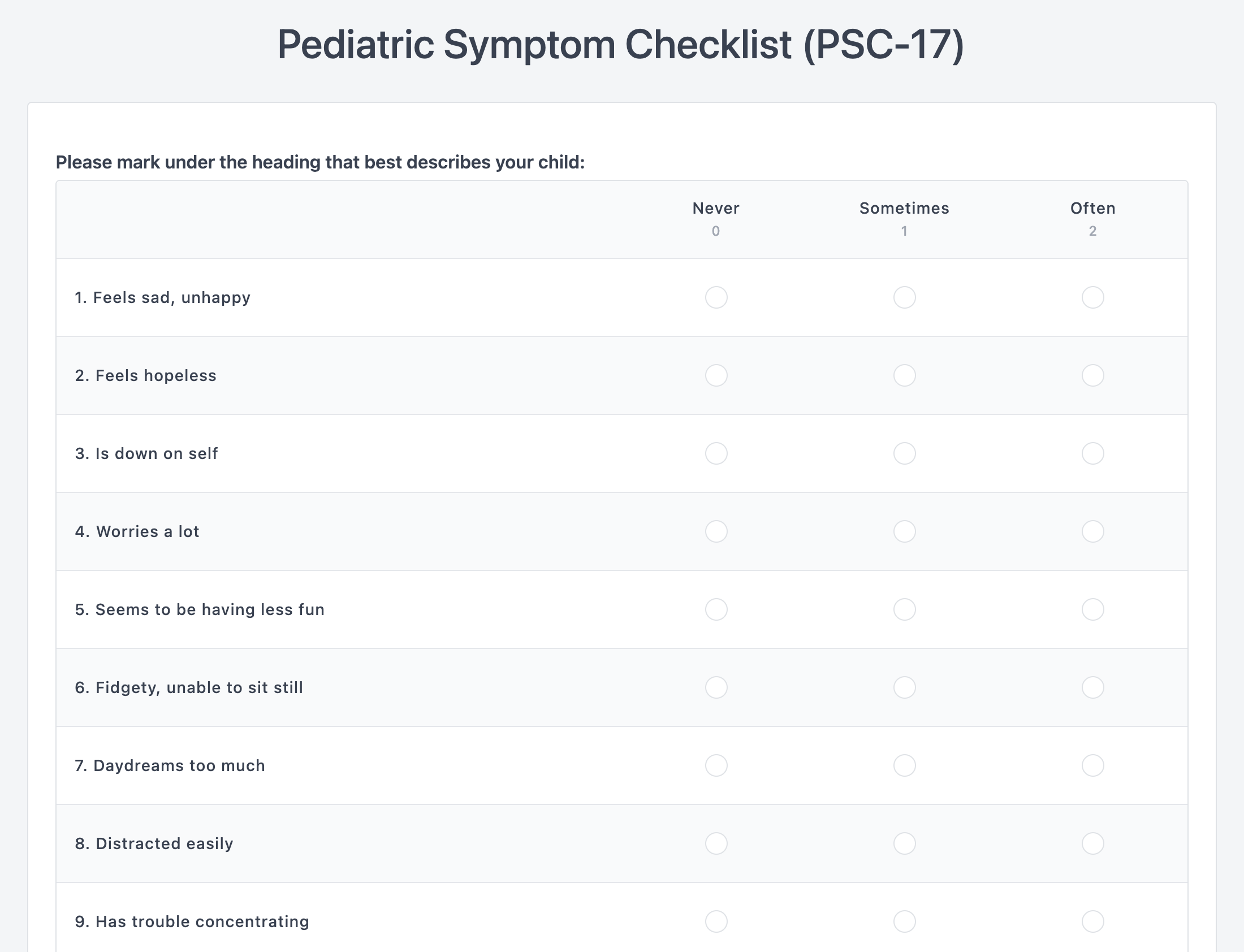

The Pediatric Symptom Checklist-17 (PSC-17) is a brief, validated behavioral screening tool used to identify cognitive, emotional, and behavioral problems in children and adolescents. Completed by a parent or guardian, the PSC-17 helps pediatricians and primary care providers detect issues early and coordinate appropriate mental health referrals or interventions.
Early Identification of Behavioral Concerns
Detects potential emotional or behavioral issues before they escalate, supporting early intervention.
Validated, Research-Based Tool
Proven reliability across diverse populations makes it a trusted instrument for primary care settings.
Efficient and Easy to Administer
Takes just a few minutes for parents to complete and can be integrated into standard well-child visits.
Guides Mental Health Referrals
Scores help determine if further evaluation by behavioral health professionals is needed.
Supports Whole-Child Care
Enhances pediatric care by addressing psychosocial health alongside physical development.
Pediatric Practices
Used during routine checkups to screen for internalizing, externalizing, and attention-related concerns.
Family Medicine Clinics
A behavioral health screening option for providers seeing children and adolescents.
School-Based Health Programs
Helps identify students who may benefit from school counseling or further evaluation.
Community Health Centers
Supports comprehensive care in underserved populations with limited mental health resources.
Behavioral Health Integration Programs
Forms the basis of collaborative care models in pediatric primary care.
17 Questions:
Divided into 3 subscales:
Scoring System:
Each item is scored 0 (never), 1 (sometimes), or 2 (often).
Interpretation Guidelines:
High scores on any subscale or total suggest the need for additional screening or referral.
Routine Screening Ages:
Administer during annual checkups for children aged 4–17.
Parent/Guardian Completion:
Encourage honest answers based on the child’s behavior over the past month.
Scoring and Follow-up:
Train staff to score responses immediately and prepare appropriate follow-up workflows.
Referral Protocols:
Establish mental health referral pathways for elevated scores or flagged concerns.
EMR Documentation:
Incorporate results into the child’s chart for longitudinal tracking and coordination.